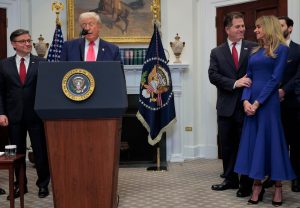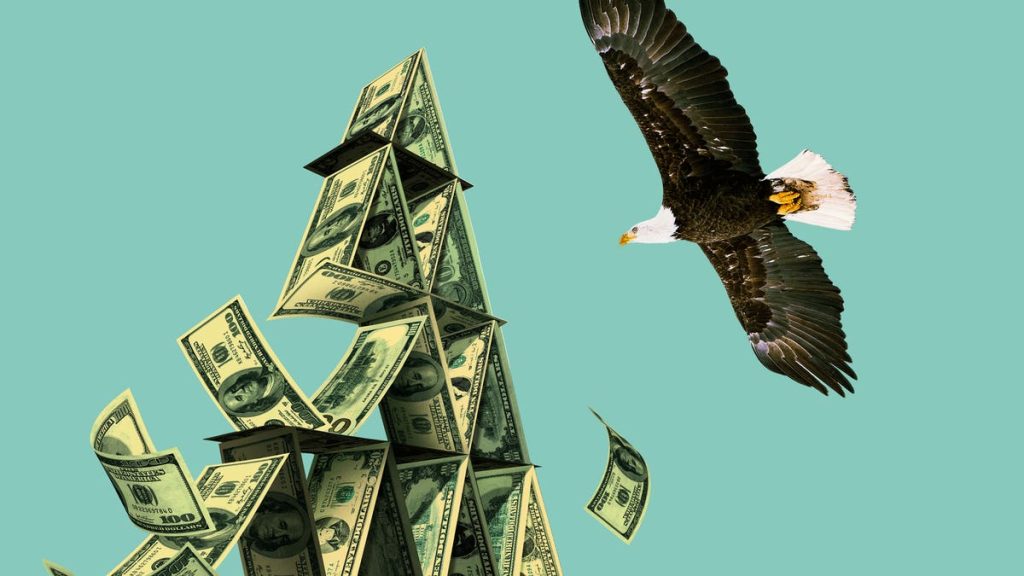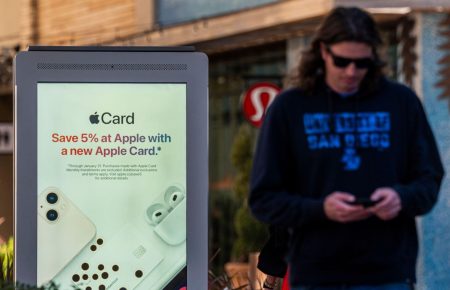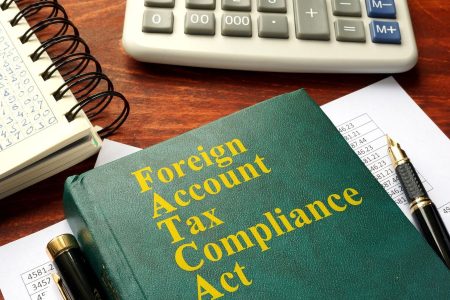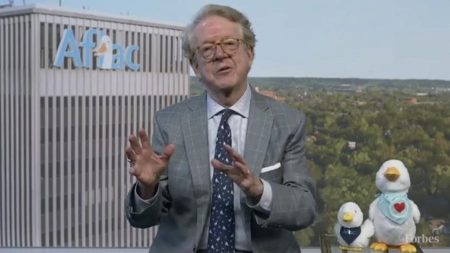Economist Charles Calomiris sets out a scary but plausible scenario for how the budget deficit will translate into grief for savers.
Worried about your deposits? Or the bank shares in your portfolio? You should be. Trouble lies ahead.
So says Charles Calomiris, economist and professor at the new University of Austin. “It’s going to get worse. People shouldn’t assume that large banks are not going to be affected,” he says.
This gloomy take on banking is grounded on a theory of government finance that describes a phenomenon called “fiscal dominance.” The theory goes like this. Step One: The budget deficit overpowers the Federal Reserve’s effort to combat inflation. Inflation goes higher and stays higher. Step Two: The government needs that inflation in order to make ends meet. It gets in the habit of paying a large part of its expenses by levying an “inflation tax” on currency and bank deposits. Step Three: Depositors duck the tax by moving as much money as they can out of the banking system. On shrunken assets the banks make less money.
This has happened before, during the inflation of the 1970s, and, Calomiris says, it will happen again. Chronic 8% inflation is a distinct possibility.
Just when we arrive at this dire state is not something that this economist can forecast. But the day will come, he says, when investors gag on U.S. Treasury bonds. Unable to finance itself with a rising level of debt to GDP, the government will have to do one of three things: raise taxes, cut entitlements or extract wealth via the inflation tax. Politics makes the first two of these choices all but impossible. That leaves the third, which Fed Chairman Jerome Powell or his successor can probably implement without any help from Congress.
Calomiris, 65, has spent most of his career at universities and think tanks and served briefly as the chief economist at the Office of the Comptroller of the Currency, which oversees nationally chartered banks. He is no perennial sourpuss in the manner of Nouriel Roubini; on the contrary, he says, at OCC he was an optimist about the financial sector, even as covid threatened to wreck the economy.
But now the flight from deposit accounts is hitting banks at the same time they are coping with two other crises. They are losing money on their long-term bond holdings, and they are at risk of losing another pile on loans for commercial real estate.
Calomiris has some personal understanding of the latter problem. He owns commercial property in Reston, Virginia, near where he grew up. “I’m getting clobbered,” he says. “The yoga studio went out of business.” His real estate, lightly leveraged, is not at risk of foreclosure, but plenty of bank-financed office buildings and hotels are.
The inflation tax that Calomiris is talking about is now being levied only on currency. At 5%, about where inflation has been over the past year, the $100 you have sitting in your sock drawer becomes worth $5 less every year. The government grabs that $5. Keeping the supply of currency fixed in real terms, it can print $5 of paper money at your expense and use it to pay for Social Security, Medicare and whatever.
Calomiris explains: “The inflation tax rate is the rate of inflation. The tax base is any government borrowing where the government does not have to pay interest.” The tax is not being levied at the moment on bank reserves, but it could be, and that would generate a lot more virtual income for Uncle Sam.
Banks keep $3.2 trillion of deposits in the Federal Reserve system and use that money to facilitate bank wires and check clearing. Today, the Fed pays banks 5.15% interest on these balances. But it could choose to pay nothing, all the while mandating that banks maintain Fed reserves equal to a certain percentage of their deposits.
In that situation bank deposits become fractionally exposed to the same erosion that now afflicts currency. If some of your deposit is spirited away to a no-interest account at the Federal Reserve, your bank won’t be paying you much interest on it.
Suppose the Fed implements a stiff 40% reserve requirement. Commercial bank deposits now total $17 trillion, so such a policy would boost the reserve base to $6.9 trillion. Add that to the $2.3 trillion of currency in circulation and the government has a potential inflation tax base of $9.2 trillion. People do not, however, sit still while their money is being eaten away by inflation. They hold less cash in their wallets and they get by with smaller checking accounts.
A 40% reserve requirement would be extreme. “We’ve never done anything like that before,” Calomiris says. But desperate finances call for desperate measures. The problem starts with the unwillingness of politicians to touch Social Security or Medicare and would be compounded if China’s belligerence results in a boost to defense spending. “If you’re going to spend like a banana republic, you’re going to inflate like a banana republic,” he says.
Half a century ago, as inflation zoomed upward, individuals and corporate treasurers discovered the dark art of cash management. The 1970s saw the blossoming of money-market funds, commercial paper and schemes to sweep cash into temporary Treasury bill holdings, all aimed at delivering yield on formerly dead money.
There’s no telling how creative people will get this time around. Making guesses about the size of the inflation tax base and about the hole in the budget that would need to be filled, Calomiris comes up with that 8% inflation figure. The resulting inflation tax would allow the government to meet its obligations without pushing up the debt/GDP ratio, which is already high (see chart).
Uncle Sam’s Debt Burden
Publicly held federal debt as a percentage of annual GDP
When we get to that point depends on some variables that are not knowable in advance. The big ones: real interest rates (historically near 2% but recently lower than that) and economic growth (which has averaged 1.9% in this century but is expected by many economists to diminish).
The real interest rate on federal debt tells you how fast the numerator grows in the debt/GDP ratio. Economic growth determines the denominator. If real rates creep above growth, the U.S. Treasury gets into trouble very quickly.
Working in the other direction, the day of reckoning will be delayed by the windfall that the Treasury gets from unexpected inflation, which drives down the value of bonds already outstanding. That’s a one-time gain, though, because investors can be fooled only once. After high inflation sets in, bond buyers insist on higher coupons on new debt.
“It’s hard to nail down the precise moment everything goes kerflooey,” Calomiris says. “We could easily be in a fiscal dominance problem in five or ten years—or a lot sooner.”
If he’s right, there are two lessons for savers. One is that long-term Treasury bonds, now yielding 4%, are bad buys. The other is that bank shares, off 15% so far this year (to judge from the SPDR S&P Bank ETF), are still not cheap enough to go in your portfolio.
“Depositors will try to get out of the banking system,” Calomiris predicts. “There will be financial innovation. Banks will become less profitable.”
There’s no official endorsement of Calomiris’s radical thinking, but an arm of the government is willing to let it see the light of day. His paper on fiscal dominance was published this month by the St. Louis Federal Reserve Bank.
MORE FROM FORBES
Read the full article here


